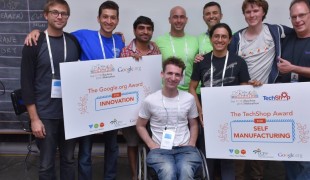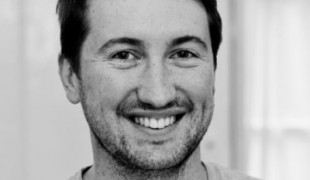- 3862
- 236
- 7
- 5
- 0
- Help Ukraine
About the solution
The twins are now 3D printing experts, as they are constantly designing and 3D printing all sorts of little components and parts to make their own lives easier.
“When I was little, my dad taught me how to make model aircraft out of balsa wood and glue, and my disability took that away from me, but now technology has given that ability back. I can design things on the computer and print them out on my 3D printer and it's fantastic”, Nick explained.
When their disease reached critical stages around the age of 21 – when most of their muscles lost strength and even their lungs were barely useable - the brothers started using their 3D printing skills to help them cope with their disease.
The twins operate their computers through small 3D printed finger devices that have been attached to their desk, to reduce strain on their weakened muscles as much as possible. Various home-made additions to their wheelchairs, to increase muscle support, have also been made at their own initiative. ‘I wanted to adjust how I was sitting in my wheelchair so I designed the little piece to go in the side support bolts,’ Nick says. ‘We measured it up, designed something, 3D printed it and screwed it in and it's great.’
Nick and Chris started their own hacker’s collective MESH, which they envision as a maker’s movement to ‘re-enable’ the disabled. ‘I think a lot (of people with disabilities) don't even know this exists, and they don't know what they can do,’ Nick said. ‘What we want to do is to enable people with disabilities to design and create things for themselves. In the past it was virtually impossible for someone like me to actually make something physical, but now with computers, computer-aided design and 3D printers it's become relatively easy.’
Adapted from: http://bit.ly/1yK6GXm
https://www.youtube.com/watch?v=zl2qe0gLBq8
What about you, do you have any solutions? Please share them with the Patient Innovation community!
This solution shall not include mention to the use of drugs, chemicals or biologicals (including food); invasive devices; offensive, commercial or inherently dangerous content. This solution was not medically validated. Proceed with caution! If you have any doubts, please consult with a health professional.
DISCLAIMER: This story was written by someone who is not the author of the solution, therefore please be advised that, although it was written with the utmost respect for the innovation and the innovator, there can be some incorrect statements. If you find any errors please contact the patient Innovation team via info@patient-innovation.com
-
-
392
-
0
-
4426

Smart Ass – App and 3D device for wheelchair users
MOVING IN A WHEELCHAIR: Moving using a wheelchair.
CAREGIVING
Neuromuscular Disorders
Assistive Daily Life Device (to help ADL)
Walking Aid (wheelchair/walker/crutches)
3d Printed
Muscle cramps or spasms
Paralysis of the legs and lower body
Regaining sensory function
Managing pain
Promoting self-management
Preserving Organ Function
To implement a diagnostic tool
Maintaining Balance and Mobility
Restoring Blood Circulation
Preventing (Vaccination, Protection, Falls, Research/Mapping)
Caregiving Support
Dermatology
Internal Medicine
Orthopedics
United States
-
-
-
1041
-
4
-
26606

Morph Wheels - Foldable wheels for wheelchairs
MOVING IN A WHEELCHAIR: Moving using a wheelchair.
CAREGIVING
Traveling
Urban exploration
Assistive Daily Life Device (to help ADL)
Walking Aid (wheelchair/walker/crutches)
Restoring mobility
Promoting self-management
Preventing (Vaccination, Protection, Falls, Research/Mapping)
Caregiving Support
Neurology
Orthopedics
Rheumatology
Mobility issues
United Kingdom
-
-
-
517
-
0
-
8737

Patient develops sand rider wheelchair
MOVING IN A WHEELCHAIR: Moving using a wheelchair.
CAREGIVING
Walking Aid (wheelchair/walker/crutches)
Restoring mobility
Promoting self-management
Promoting inclusivity and social integration
To implement a diagnostic tool
Maintaining Balance and Mobility
Caregiving Support
General and Family Medicine
Medical Genetics
Neurology
Orthopedics
Rheumatology
Aging
Mobility issues
Solutions for Disabled people
United States
-
 en
en